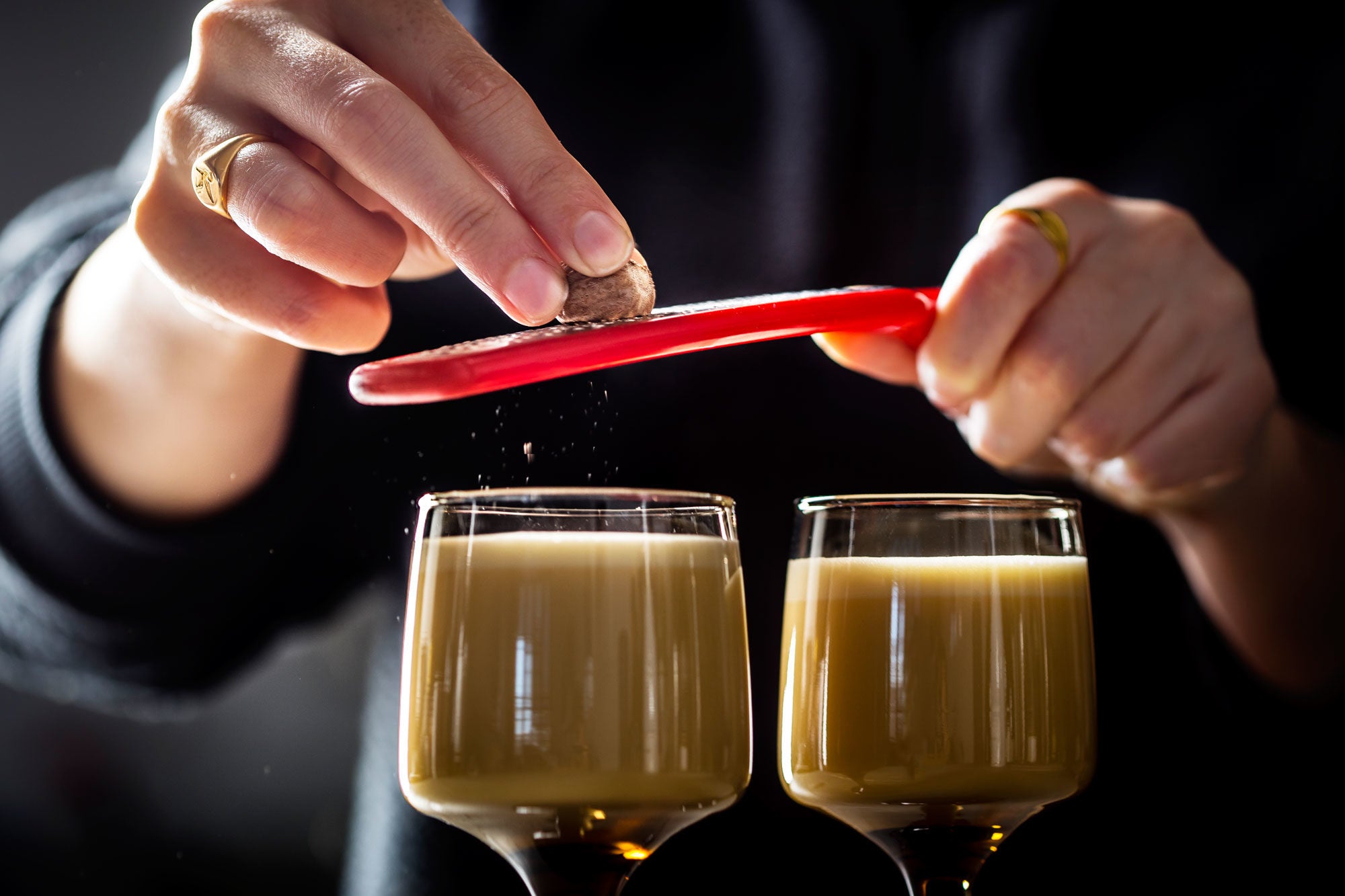
Not only for lemons, the Microplane zester is as versatile a tool as any for the home cook.
When cookbook author Dorie Greenspan has an uneven pie crust, she reaches for her Microplane to give it a trim for a picture-perfect apple pie—it’s like Photoshopping in real life. A quick shave, and the problem area disappears. The Microplane, the household name for rasp-style graters, much like Kleenex for tissues, excels at clever kitchen tricks like this. Whether it’s delicately shaving chocolate onto a cappuccino or grating airy snowflakes of Parmesan onto a mound of steaming spaghetti, the Microplane is like a kitchen secret weapon. The versatility, ease, and convenience of this tool makes it one that’s in almost every chef’s knife bag and loved by most who encounter it—and it’s not just for zesting citrus or grating cheese.
Greenspan has a full wardrobe of planes and uses them just about daily. Equipped with a Microplane, she grates frozen butter into flour-sugar mixtures when she has a last-minute urge to bake cookies and no ready-to-go butter in the fridge. The nimble tool takes on little jobs like spots of burnt toast or well-done crusts that just need a light shaving to disappear.
The Microplane delivers these superior results by design. Rasp-style graters (modeled after a wood-shaping tool) are not to be confused with the more straight-edged box grater—you know, that one you probably picked up at Ikea when moving into your first place. That block of cheese and bloody knuckles.
According to America’s Test Kitchen executive editor Hannah Crowley, Grace Manufacturing, the parent company of Microplane, pioneered a special photographic chemical etching process that creates razor-sharp grating teeth, which allows them to make such fine shreds. It’s like using a sharp chef’s knife versus one that’s been dulled—the ease of execution and final product are superior. They don’t dull as quickly as box graters (the average Microplane lasts about five years), which are typically stamped from sheet metal and can’t achieve the same refined, sharp cut.
With most models under $15, Microplanes come with different-sized “teeth,” the sharp raised bits, for varying purposes. Crowley recommends the Premium Zester Grater, which works well with the obvious garlic, cheese, and citrus as well as cinnamon or nutmeg for wintry cocktails and ginger for homemade gingerbread, as the most useful for home cooks. The wider, paddle-shaped Coarse Grater is ideal for larger, harder foods, such as carrots (think fritters on the fly) or coconuts (embellished macaroons).
When recipes call for GGS (the classic Asian mirepoix of ginger, garlic, and scallions), you can forget the knife for the ginger and garlic and slide both across a Microplane zester blade. Beyond the ease, the tool achieves an ideal, even texture.
Plus, you can freshly grate spices without a special grinder and with faster cleanup. Buying fresh turmeric to grate into kitchari or wasabi for your DIY sushi night is now realistic. Grating fresh horseradish into a Bloody Mary for a spicy kick becomes a no-brainer.
Crowley believes that a Microplane’s lengthy blade is more ergonomic in many cases: You can slide a hunk of hard cheese down at, say, a 45-degree angle versus a 90-degree angle on the more vertical side of a box grater. But it isn’t time to throw out that box grater. While Pecorino makes perfect shreds for salads or topping your cacio e pepe, Crowley explains that box graters and their larger holes are ideal for softer cheeses like mozzarella and cheddar, when you want thicker, clunky strands for topping chili or pizzas. These cheeses get stuck in smaller holes.
After 10 years with my own Microplane, it’s still my favorite tool and one I use daily, mostly for grating garlic and other time-saving endeavors. It’s reliable, sturdy, and easy to travel with—everything I’ve always wanted in a kitchen partner.